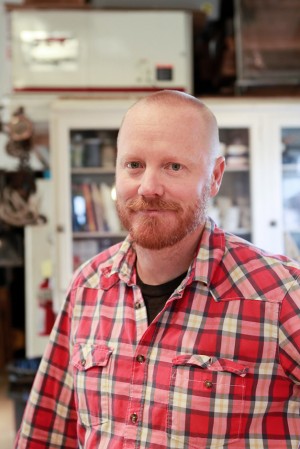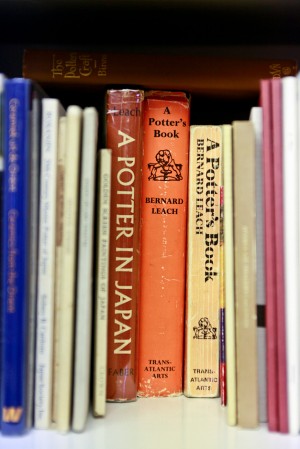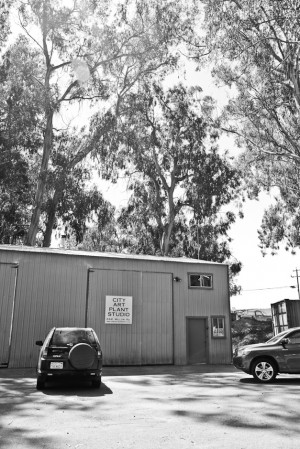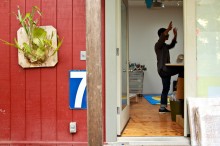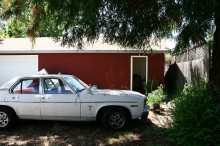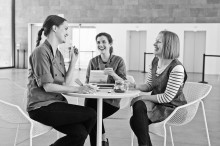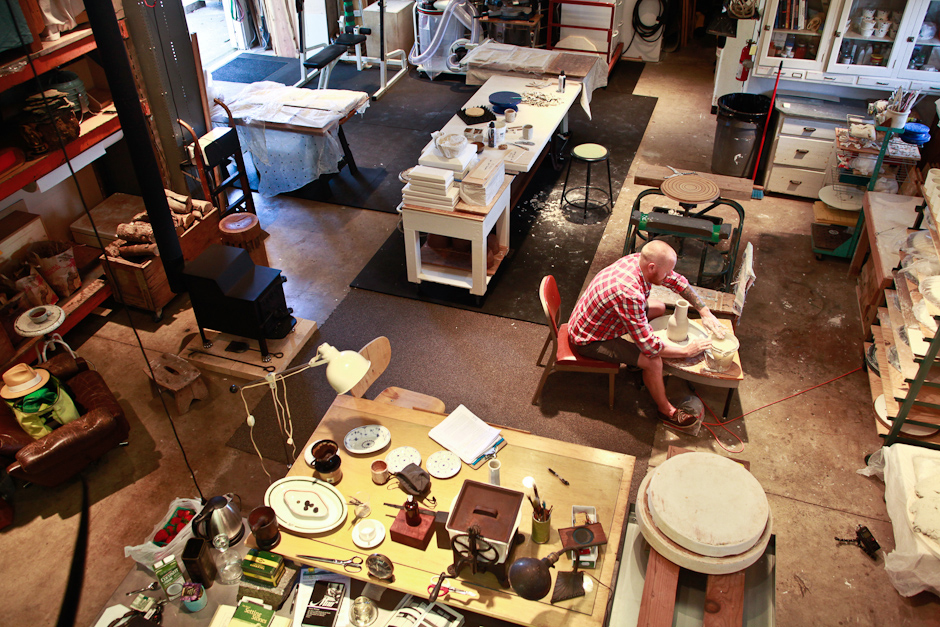
Trent Burkett
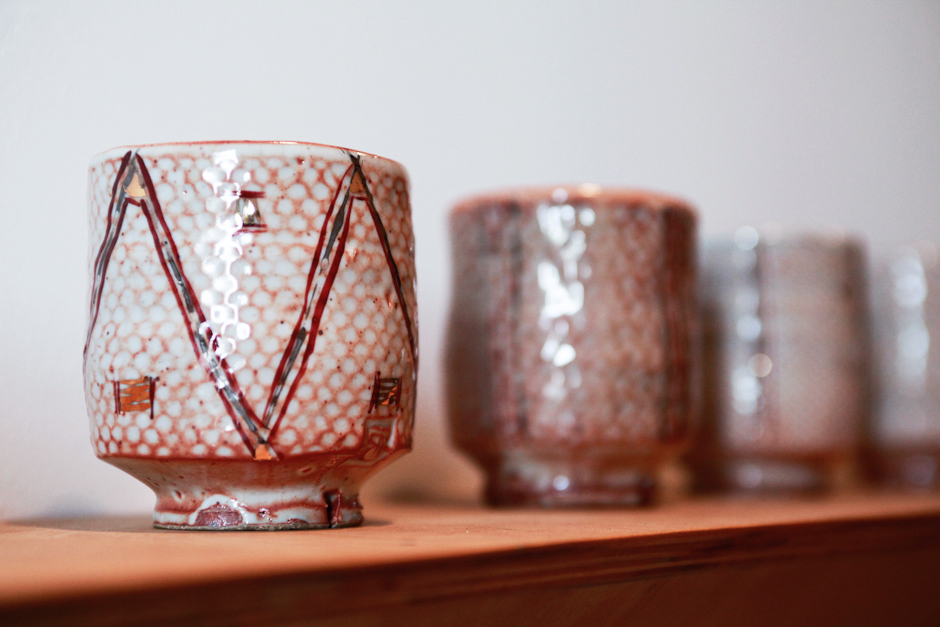
This studio visit started off a bit different. We had left Santa Barbara late, where we’d let the hours get away from us while visiting Joan Tanner, and so we headed up the coast to Trent’s Arroyo Grande studio in the dark, in kind of a mad dash to get to him on time. When we arrived it was pitch black. It was impossible to see houses or driveways or mailboxes; it was as if everything along the country roads had disappeared, and been swallowed up by the night. We drove back and forth on the same road, tiredly squinting into the darkness, hoping to find our resting place for the night.
Without really knowing us yet, in the early stages of planning the WESTERN EDGE trip, Trent had generously offered to let us crash in his studio, in the small upstairs space above his massive work area that is set up with sleeping quarters. Of course, we were on a budget and always happily accepted offers for free lodging. Trent’s studio space is broken up into three general zones— there is the upstairs which has a living room feel to it, and then downstairs near the entrance is a showroom, and adjacent to that is his spacious work area. Littered throughout are gorgeous, uncommon objects, photographs, and books, which not only reveal Trent’s taste and interests, but also hint at the meticulous focus and care he brings to his work.
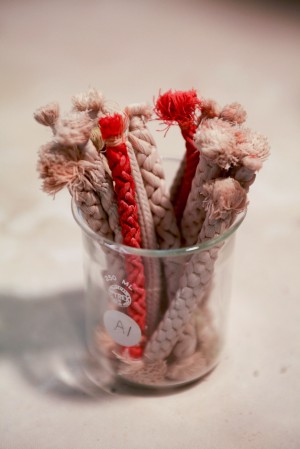
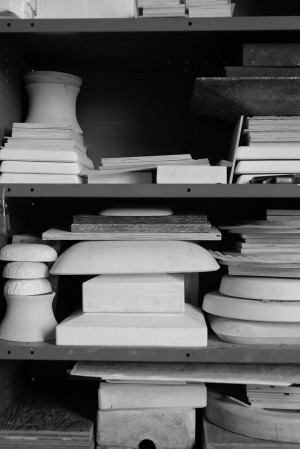

Recently, Klea pointed out what an interesting and singular experience it was to be able to spend time with Trent’s work that night, without him being present, and without us immediately launching into documenting/interviewing mode. It was a special experience— we got to wander around his space, quietly looking, noting certain details but not talking about them, just using our time to slowly take everything in. So by the time Trent showed up the next morning with fresh strawberries and coffee, Klea and I felt at ease in his space and had a level of comfort with his work that was new for us. Because Trent’s practice encompasses both ceramics and sculpture, there is a good deal of diversity within his work— not only does he make familiar, functional vessels such as cups, plates, and vases, but he also creates works that are driven solely by form. Trent is both a highly skilled craftsman as well as an artist, but that dualistic identity isn’t necessarily always easy to inhabit. In my mind, it seems obvious and natural that one can move between being a craftsman and artist easily and seamlessly, and in the case of Trent I think he deftly negotiates both worlds. But it can get tricky, because they are actually quite different spheres that operate under different rules and expectations, with often disparate interests and motives at hand. I take my hat off to Trent for not backing off, for deciding to continue forging ahead as both a craftsman and artist, with the goal of somehow authentically and gracefully merging two practices into one. Really, I believe his practice is a single force that just has taken on varied incarnations.
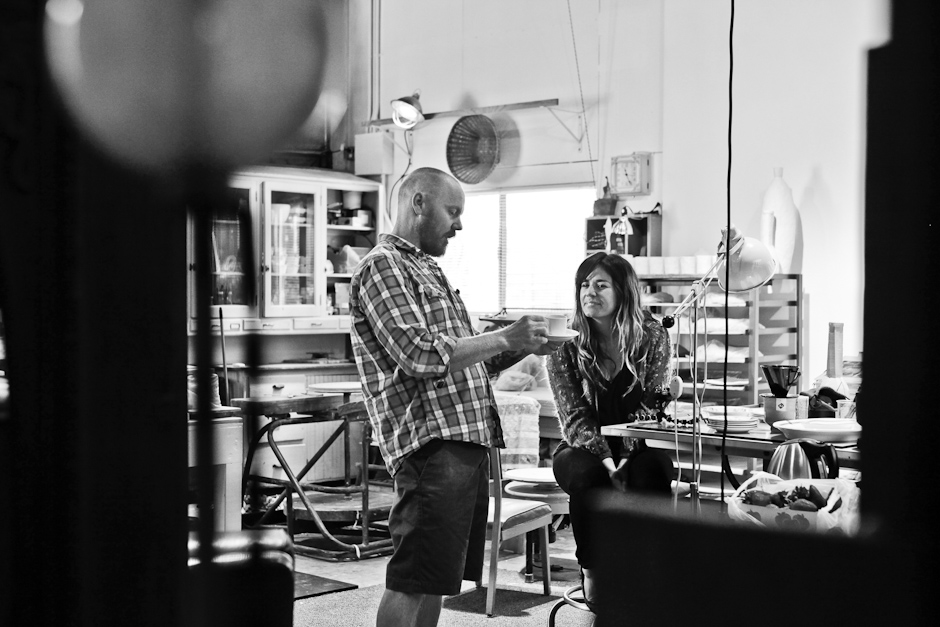
What materials do you work with?
Clay, wood, pigments, paper, found object, light, metal, found material, paint media.
How would you describe your aesthetic?
I place an emphasis on what I view as strongly proportioned forms, rich surfaces, manipulation of raw material, and the absence of overt imagery, hence my work lacks any conspicuous narrative. As a result, I use formal characteristics to convey a narrative of the process, i.e. I let all the aspects of the process show, which gives the work a hewn, raw feeling or look. The materials I choose are equally important to my aesthetic. I am drawn to raw materials such as clay, pigment, or wood, and find ways to give them form and beauty without losing the original quality.


How do you conceptually approach your work?
When it comes to making pots, I am bound to the history of forms that we all know….cup, bowl, bottle, plate, etc. I like the idea of continuing to create forms from that well and finding subtle ways to reinterpret them. And, I like the idea of utility in all things, not just pots. I am captivated by old world craft of any type and identify with the notion of the craftsperson, one who is designated that way in a community (like a blacksmith). The beauty and strength of utilitarian objects is that the form is literally its function without any extra parts.
I tend to identify with ideas of Naturalism, which embodies from a theological standpoint, a doctrine that religious truths are formed from nature rather than from divine will. When I travel in the wilderness, I find myself thinking how I can convey through my work the forces at play in the landscape. Even in my pottery work, I find these ideas surfacing through my interest in the materials and process, which is very much tied to geology. One example of something I have seen in the landscape that just blows my mind is “Erratics.” These are glacially deposited boulders set down in some random location when the ice melted. I see those and think…”Wow, this rock has been sitting here just so for the last umpteen thousand years” and “this rock represents a tiny fraction of time in the greater scheme of things.” So, I wish I could capture that kind of concrete reality in my work.

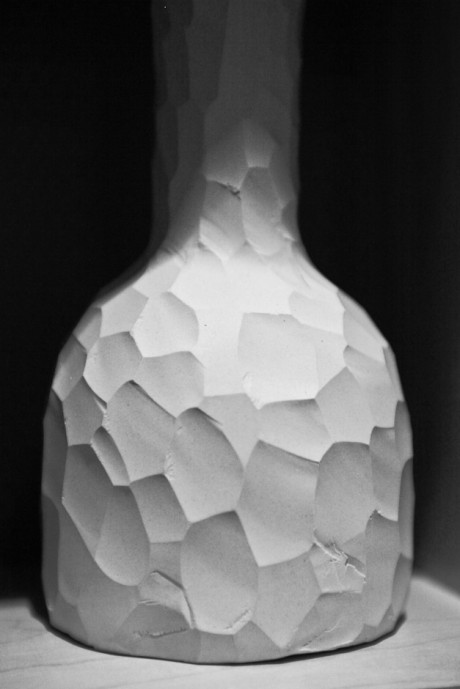
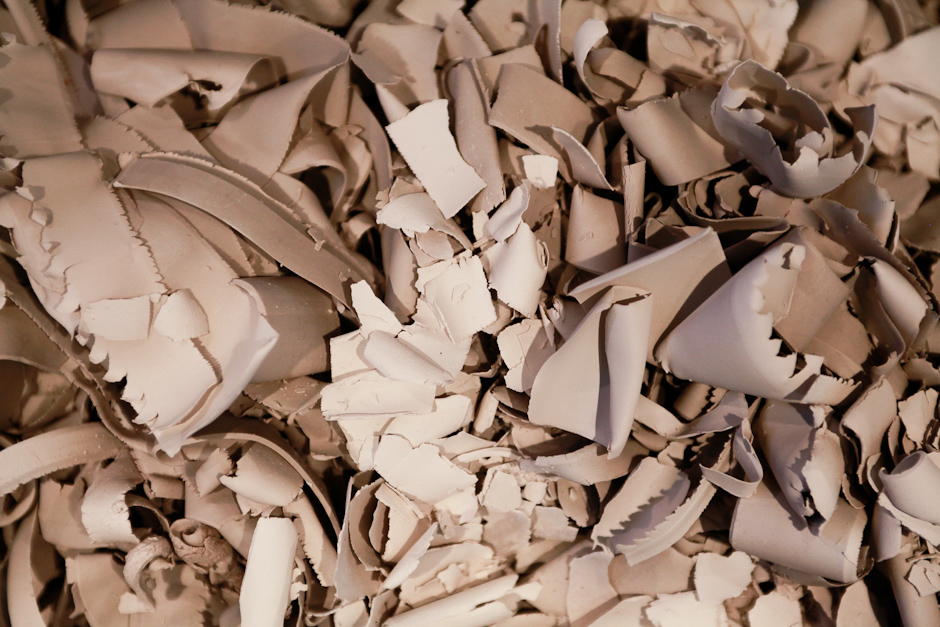
The utilization of space is a key element to your work; can you tell us more about this?
This means two things. In a more literal sense, when I know I have a show, it is very important to visit the space and work backwards in developing the work to fit. I am trying to think of the space as a material that encompasses the things I will create and arrange in it. This will have an impact as a whole. I have done a number of installation-type works, so the space really becomes the primary element to work with. I also appreciate the works of Donald Judd and Robert Irwin. One can think of space as a form between objects that is as important as the objects individually. It is impossible to see form without seeing the space around it. This is the way I look at things in general whether creating work or when I am out in the world just observing.
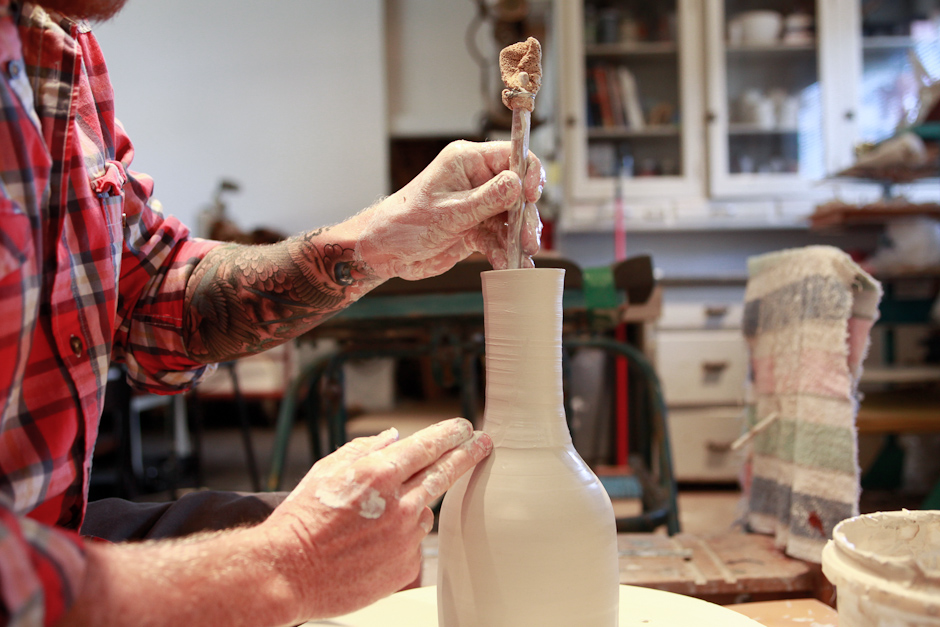

What are you presently inspired by— are there particular things you are reading, listening to or looking at to fuel your work?
I am currently reading:
Shock Of The Old: Christopher Dresser’s Design Revolution, Smithsonian Cooper-Hewitt, National Design Museum. This was published in conjunction with the first comprehensive museum retrospective. He is increasingly being credited as the first professional industrial designer. Dresser’s (1834-1904) works were 50 years ahead of their time and resemble much of what we would call Mid Century Modern.
I’m also reading Nature: Documents of Contemporary Art, Whitechapel Gallery, edited by Jeffrey Krastner.
My inspiration most often comes from the materials I find or acquire. And these are usually a raw type of material found directly from nature. I just recently acquired two very large slabs of marble that were cut directly from the mine. I am inspired purely by the mass and beautiful whiteness of the material and just having it sit in my studio conjures many ideas and directions, the least of which are for traditional applications of what we normally think artists do with marble. I have similar inspirations from other materials like a group of raw pigments I both purchased and have found occurring naturally.
The books are twofold. I am trying to find source material to conceptually support my ideas about the landscape. I am equally influenced by the history of craft movements and recently found the work of Christopher Dresser for whom I wasn’t aware existed. There are aspects of Dressers work and influence that parallel my work. In particular, he traveled to Japan and collected references that he then applied to his designs.


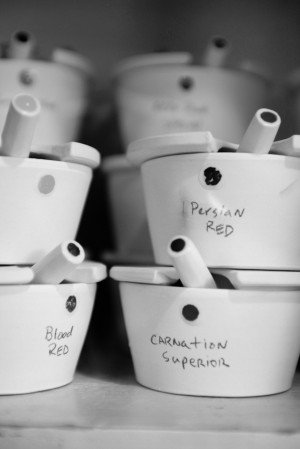
Is there something you are currently working on, or are excited about starting that you can tell us about?
I have a show in March, 2014 at JayJay Gallery in Sacramento. This will be a mixed media sculpture exhibit. I am really excited about the ideas I have been developing for this show. One new piece consists of a set of early 20th century Dutch Furnival blue plateware I purchased and will china paint back over them.
I will also have a show next year, TBA, at the Signature Shop and Gallery in Atlanta. This show will be more exclusively ceramic related. I am already making work for this exhibit.
I will be departing December 26th for a residency at the Red Lodge Clay Center in Montana to work with a long time friend and colleague who teaches in North Dakota. It is a two-week residency and I plan to make work for my upcoming shows there.



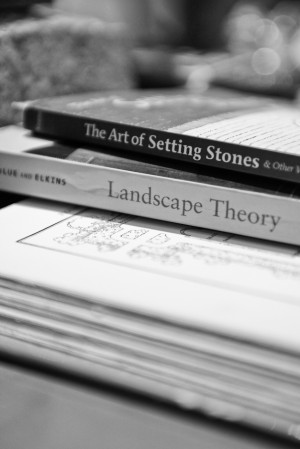
Do you have a day job? What is it? What does it mean to you?
I am chair and professor in the department of Visual Art at University of the Pacific in Stockton. I have been there since 2000. I primarily teach ceramics and sculpture classes. Next year, I will be taking a year long unpaid leave to focus on my business, City Art Plant Studio, located at my studio in Arroyo Grande (near San Luis Obispo). I am exploring some options, both for continuing to conduct my private business as an artist as well as incorporating my teaching into the business, in the hopes that I can create a more sustainable practice. The tough thing about teaching and administering an academic program is being able to find the time to keep up the production of my work for exhibitions and commissioned projects.
My job as an educator at a University has been very rewarding. The best part of that has been the alums I have mentored while students who have gone on to have successful art careers. There have not been too many, but the ones I have worked with continue to become my closest colleagues and friends. They keep me young at heart and fresh with new ideas for my own work, and I continue to support them in every way possible.
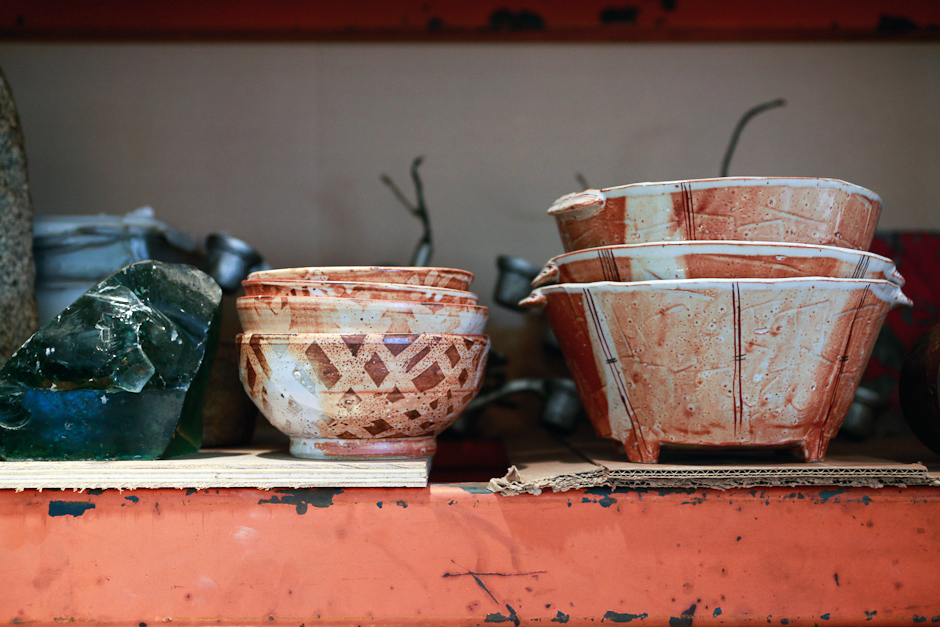
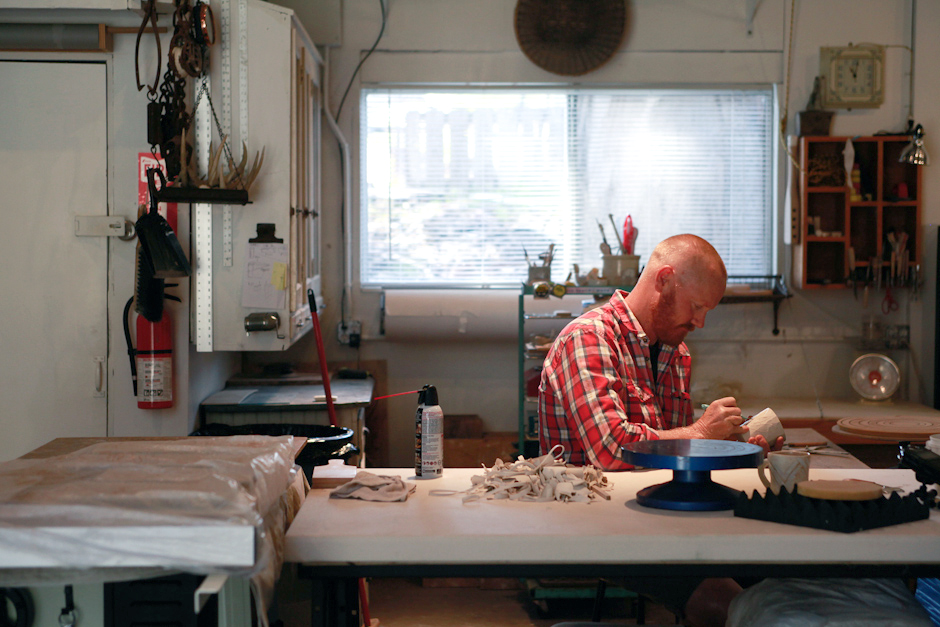
What are your biggest work challenges and how do you deal with them? How do you navigate the business side of things?
I have two sons (6 and 1 year). I am torn all the time about spending time with my family and getting to work on art. But, that is a good problem to have, so I just take it day by day and try to enjoy my time in both.
The business side of being an artist is always interesting. I have been lucky to develop some good relationships with galleries and have also secured some large commissions for corporate and private projects. I kind of have two lives as an artist that I am working to merge into one. The first is my life as a potter/ vessel maker, which constitutes my early training and trajectory as an exhibiting artist. The galleries and collectors for that type of work are not the same as those in the realm of sculpture. I have now been working equally on the more sculptural aspects of my work and have developed a trajectory there as an exhibiting artist.

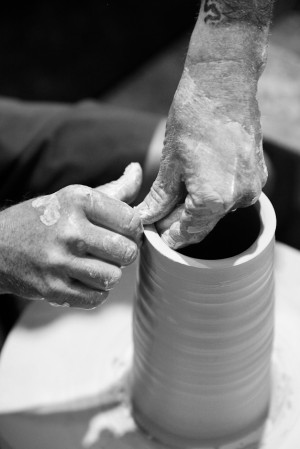
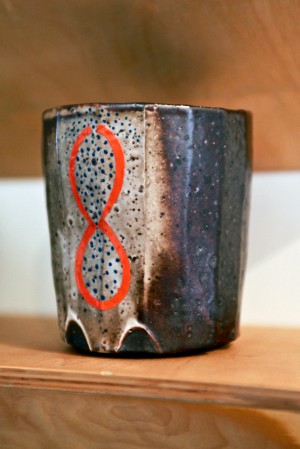
Words to live by…favorite quote or motto?
I have never been a quoting type. But I feel like we are lucky to be here now. This is paradise. I really loved Bill Bryson’s book entitled, A Short History of Nearly Everything. The introduction starts….”Welcome. And congratulations. I am delighted you could make it. Getting here wasn’t easy….”
To see more of Trent’s work:
www.trent-burkett.com
Also, check out his flickr.
The Signature Shop and Gallery, Atlanta, GA.
At his studio, City Art Plant Studio, Arroyo Grande, CA.
